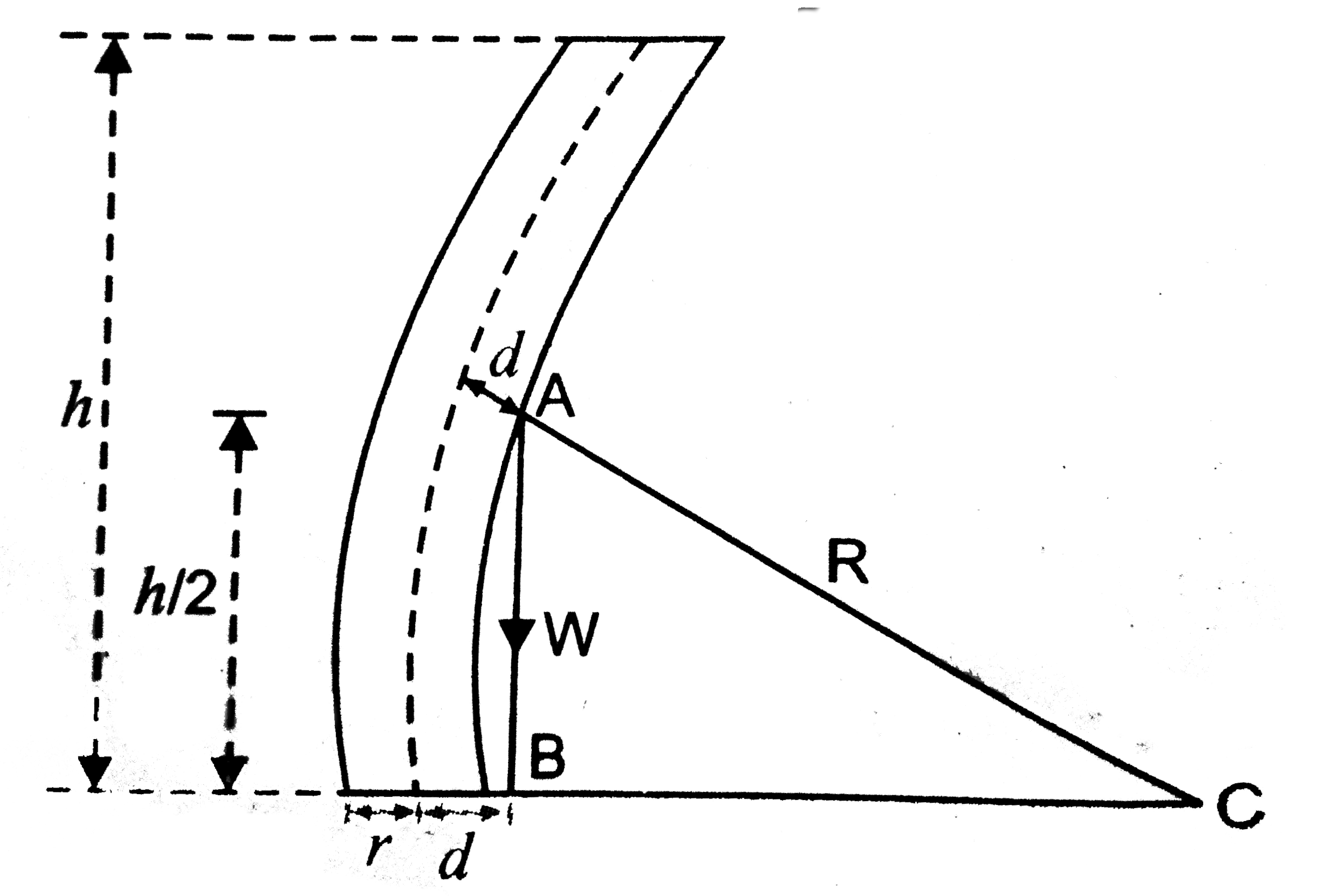In nature, the failure of structural members usually result from large torque because of twisting or bending rather than due to tensile or compressive strains. This process of structural breakdown is called buckling and in cases of tall cylindrical structures like trees, the torque is caused by its own weight bending the structure. Thus, the vertical through the centre of gravity does not fall within the base. The elastic torque caused because of this bending about the central axis of the tree is given by Yπr44R. Y is the Young's modulus, r is the radius of the trunk and R is the radius of curvature of the bent surface along the height of the tree containing the centre of gravity (the neutral surface). Estimate the critical height of a tree for a given radius of the trunk.
The bending torque on the trunk of radius r of tree =Yπr44R Where R is the radius of curvature of the bent surface. Let h be the height of tree. If R gtgt h, then the centre of gravity of tree is at a height h/2 from the groung.

in ΔABC Since d ltlt R, therefore the term d2 being very very small can be neglected. ∴R2=R2−2Rd+h2/4ord=h28R.....(i)
If W0 is the weight per unit volume of the tree, then Tπr44R=W0(πr2h)d=W0πr2h×(h28R) from (i)
∵h=(2YW0)1/3r2/3
Similar Questions
In nature, the failure of structural members usually result from large torque because of twisting or bending rather than due to tensile or compressive strains. This process of structural breakdown is called buckling and in cases of tall cylindrical structures like trees, the torque is caused by its own weight bending the structure. Thus, the vertical through the centre of gravity does not fall within the base. The elastic torque caused because of this bending about the central axis of the tree is given by Yπr44R. Y is the Young's modulus, r is the radius of the trunk and R is the radius of curvature of the bent surface along the height of the tree containing the centre of gravity (the neutral surface). Estimate the critical height of a tree for a given radius of the trunk.
View SolutionWhat does the torque do?
View Solution
Knowledge Check
Structural proteins are usually
AfibrousBglobularCenzymaticDsolubleAll structures within the seed coat are called
AEndospermBCotyledonsCEmbryoDKernelA tall structure has a
Anarrow span of managementBwide span of managementCno span of managementDless levels of management